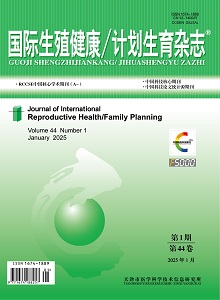Objective: To investigate the pathogenesis of recurrent implantation failure (RIF) in patients with "uterine coldness" syndrome, based on the 4D-DIA quantitative proteomics technology. Methods: Eight RIF female patients with uterine coldness, and five age-matched women as the control group whose infertility was due to male factors or fallopian factors, were recruited from October 2023 to February 2024. Endometrial tissues were collected during the implantation window for protein extraction. Chypsin digestion and liquid chromatography-mass spectrometry were used for proteomic analysis. Differentially expressed proteins (DEPs) were identified, based on screening criteria, and then subjected to bioinformatics analysis. Results: A total of 333 DEPs were identified, including 150 upregulated proteins and 183 downregulated proteins. Functional classification of the DEPs mainly involved biological development, metabolism, protein binding, cellular transport, catabolism, signal transduction, and protein folding. GO enrichment analysis revealed that the upregulated proteins were primarily enriched in processes such as oxidoreductase activity, palmitoyl-CoA ligase activity, protein complex assembly, and long-chain fatty acyl-CoA biosynthetic process. The downregulated proteins were enriched in signaling receptor activity, molecular transducer activity, scavenger receptor activity, low-density lipoprotein particle binding, hedgehog protein binding, retinol binding, and Wnt protein binding. KEGG pathway enrichment analysis indicated that the upregulated proteins were mainly enriched in pathways such as thyroid hormone synthesis, endocrine regulation, saliva secretion, proteasome, estrogen signaling pathway, insulin signaling pathway, protein processing in endoplasmic reticulum, aldosterone synthesis and secretion, glutamatergic synapse, histidine metabolism, circadian rhythm, and cortisol synthesis and secretion. The downregulated proteins were primarily enriched in pathways including cerebellar afferent pathways, calcium signaling pathway, ubiquitin-mediated proteolysis, endocytosis, carbohydrate metabolism, and cGMP-PKG signaling pathway. Conclusions: The endometrial proteomics of RIF patients with uterine coldness suggested multiple disorders of energy metabolism, catabolic pathways, signaling pathways, and the accumulation of abnormal products. In our future study, the more reasonable control groups will be designed to identify the proteins expressed differently as the potential biomarkers of RIF patients with uterine coldness, which is crucial for revealing the pathogenesis of the RIF with uterine coldness.

